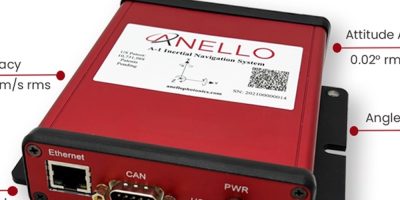The 13th Gen Intel Core mobile processor family has been introduced and includes the flagship Intel Core i9-13980HX, claimed to be the first 24-core processor for a laptop and world’s fastest mobile processor.
A total of 32 new 13th Gen Intel Core mobile processors were announced at CES 2023. The Intel Core H-, P- and U-series mobile processors power the latest thin, lightweight laptops and IoT devices.
The 13th Gen Intel Core H-series mobile processors include the first 24-core processor for a laptop. The HX processors support both DDR4 and DDR5 memory, are claimed to have best-in-class connectivity and feature PCIe Gen 5 for mobile gaming applications.
The HX family offers up to 5.6GHz turbo frequency, believed to be the highest clock speed available for the laptop market, delivering up to 11 per cent faster single-thread performance and 49 per cent faster multi-task performance over the previous generation.
It also features processors with up to 24 cores (eight Performance-cores, 16 Efficient-cores), 32 threads and enhanced Intel Thread Director. Memory support is up to 128Gbyte for DDR5 (up to 5,600MHz) and DDR4 (up to 3,200MHz).
The Intel Killer Wi-Fi 6E (Gig+) provides up to six times faster internet speeds with no legacy Wi-Fi channel interference. The processor family also features Bluetooth LE Audio and Bluetooth 5.2 supporting up to two times faster speeds and multiple device connections with lower power consumption.
Thunderbolt 4 support delivers transfer speeds up to 40Gbits per second and PC connectivity to multiple 4K monitors and accessories.
Leveraging work with discrete graphics, the processors improve the integrated graphics experience based on improved driver stack and key learnings, said Intel.
The HX and HK processors all have overclocking capabilities.
The Intel Core P-series and U-series mobile processors offer up to 14 cores (six Performance-cores, eight Efficient-cores) and enhanced Intel Thread Director.
There are new Intel Iris Xe Graphics features including endurance gaming, XeSS Super Sampling and Intel Arc Control.
There is also broad memory support for DDR5 and DDR4 and LP variants and integrated Intel Wi-Fi 6E (Gig+) and new wireless features like Intel Connectivity Performance Suite, Intel Wi-Fi Proximity Sensing and Intel Bluetooth LE Audio.
There are up to four Thunderbolt 4 ports for the fast, simple and reliable dock, display or accessory cabling.
For the first time, select designs based on 13th Gen Intel Core processors will feature the Intel Movidius vision processing unit (VPU). AI-heavy tasks required can be offloaded to the VPU, freeing up the CPU and GPU for other workloads or multi-tasking.
Target applications are retail, education, healthcare, aerospace, industrial and smart cities, where the new processors provide better workload consolidation with more cores and threads, enabling applications to run on a single device for IoT edge computing, said Intel.
For the IoT edge, 13th Gen Intel Core processors deliver extended temperature operation and higher performing CPUs, with more graphics capabilities and AI performance, said Intel.







